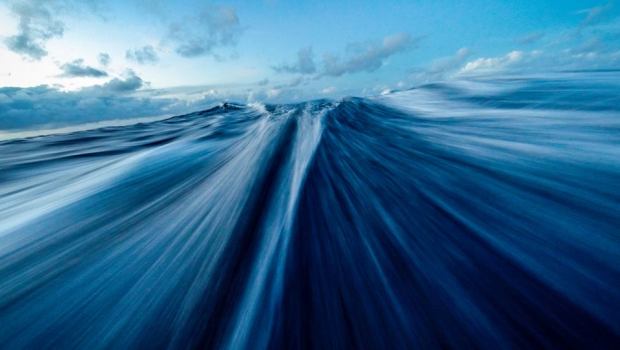Second verse, same as the first
Published on October 28th, 2014
(October 28, 2014; Day 18) – The hunt continues for the Roaring Forties winds, with all seven Volvo Ocean Race teams sailing south when the finish in Cape Town is to the east of them. This is turning the position report into almost irrelevant confusion.
Right now, the race isn’t to the finish line. The race right now is to find the fastest track south to where the strong westerly’s reside, while tip-toeing around the anemic winds of the St. Helena High to the east of their position.
“It’s almost as if we’re in a three-way tie for the lead with each boat – Abu Dhabi, Brunel, and Vestas – making bets as to where the breeze is going to be strongest as we make our way around the western edge of the St Helena High,” explains Abu Dhabi’s Onboard Reporter Matt Knighton.
“Vestas is way out west. We gybed westward a couple times during the day to try and find more wind. Brunel opted to continue on our original southerly route and not gybe west.
“Three boats, spanning a hundred miles of ocean (currently 170 nm), each with a chance of working around the other two to get around the high fastest. Time will tell, but whoever gets to the westerlies first will make big gains over the other two. It doesn’t look like there will be a massive park up after all.”
Each of the leaders are in their lane, relying now on speed to get the most out of it.
“Fundamentally, it is how you trim the sails and steer the boat,” said Abu Dhabi skipper Ian Walker in an interview with Louay Habib. “However, we have ballast tanks, dagger boards and a swing keel and all the gear on board. The most important factor is the sail settings and choice of sail combination but all of these factors contribute to performance. We spent all of our training trying to figure out how to make the boat go quick. I don’t expect to have a big speed edge over any of the boats but we are very confident in our sail choices, we have been assiduous in our data collection and analysis and we know who is the fastest driver on board in the prevailing conditions.”
Perhaps the biggest news of the day came from a Sailing Instruction amendment, which introduced an ice exclusion zone at 42 degrees south latitude. Not only does this change indicate the presence of ice, but also the possibility that the fleet might need to go that far south for the ideal route around the St. Helena High.
As a point of reference, the finish in Cape Town is at 34 degrees south latitude, and the leaders are now at 29 degrees south.
Leg 1 Position Report (as of 21:40 UTC)
1. Team Brunel, Bouwe Bekking (NED), 2528.8 nm Distance to Finish
2. Abu Dhabi Ocean Racing, Ian Walker (GBR), 31.2 nm Distance to Lead
3. Dongfeng Race Team, Charles Caudrelier (FRA), 99.0 nm DTL
4. Team Alvimedica, Charlie Enright (USA), 100.0 nm DTL
5. Team Vestas Wind, Chris Nicholson (AUS), 131.9 nm DTL
6. Mapfre, Iker Martinez (ESP), 245.4 nm DTL
7. Team SCA, Sam Davies (GBR), 269.4 DTL
Race website – Tracking – Watch log – Videos
Background: The 2014-15 Volvo Ocean Race began Leg 1 on October 11, which takes the seven teams 6478 nm from Alicante, Spain to Cape Town, South Africa. ETA is Nov. 2-6. Racing the new one design Volvo Ocean 65, teams will be scoring points in 9 offshore legs to determine the overall Volvo Ocean Race winner. Additionally, the teams will compete in 10 In-Port races at each stopover for a separate competition – the Volvo Ocean Race In-Port Series. Final finish on June 27, 2015 in Gothenburg, Sweden.









 We’ll keep your information safe.
We’ll keep your information safe.